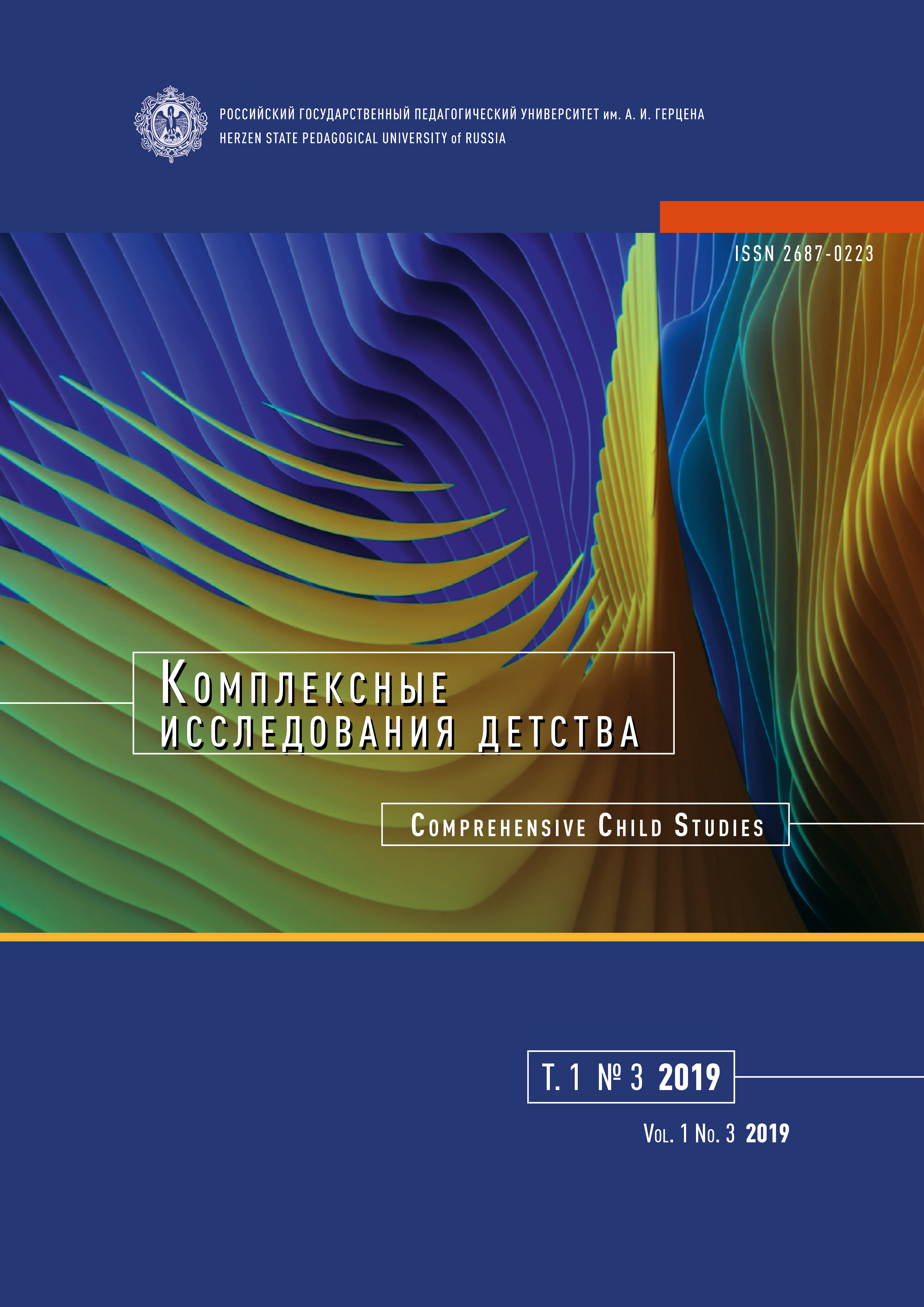Geodemography as a foundation for further development of the geography of childhood
DOI:
https://doi.org/10.33910/2687-0223-2019-1-3-181-188Keywords:
geography of childhood, demographic potential, Far East, population reduction, migration, natural decline, population reproductionAbstract
Geography has a significant integrative potential, including natural science and socio-economic content which creates the prerequisites for the study of the integral system of “nature — society — man”. An integrated geographical approach towards studying the life of society involves the interconnection of demographic structures at different territorial levels, including individual population groups. The objects of research that were previously studied by individual disciplines apply interdisciplinary integration of knowledge in order to form and develop new theoretical and methodological approaches. On the basis of the accumulated research results in the study area of regional geodemography, a new branch of demographic research – the geography of childhood is being formed and is increasingly recognised. The study of childhood issues involves an initial analysis of the current general demographic situation. Demographic potential has been severely affected by market economy conditions. About 25.5 million people live on the territory of the Ural, Siberian and Far Eastern Federal districts. The low population density of the Eastern regions, depopulation and outflow of population make these areas the most problematic for Russia. Overall from 1991 to 2017 the population of the Far East decreased by almost 20 per cent. At a time when the gradual decline of the population in the Far East continues, the demographic factor in the study of social issues becomes crucial. The observed decline is caused by the outflow of population along with negative natural growth. The main socio-demographic threat is the outflow of highly skilled labour from the district and its replacement with low-skilled or unskilled labour. The article analyses the impact of socio-economic development on the regional demographic situation, which may determine the main research areas of the geography of childhood, which are closely linked with socio-economic and socio-political processes in the region and in the country as a whole. The author identifies the transformation required of the population age structure and the conditions necessary to improve the child population quality potential. The geography of childhood is an emerging discipline designed to solve the problems not only of an individual’s development, but also of the future structure of social development.
References
ЛИТЕРАТУРА
Авдеев, Ю. А., Сидоркина, З. И., Ушакова, В. Л. (2017) Территориальная структура демографического потенциала российского Дальнего Востока. Уровень жизни населения регионов России, № 2 (204), с. 16–22.
Бакланов, П. Я. (ред.). (2012) Тихоокеанская Россия: страницы прошлого, настоящего, будущего. Владивосток: Дальнаука, 406 с.
Джонстон, Р. Дж. (1987) География и географы: Очерк развития англо-американской социальной географии после 1945 года. М.: Прогресс, 368 с.
Саградов, А. А. (2005) Экономическая демография. М.: ИНФРА-М, 254 с.
Сидоркина, З. И. (2018) Проблемы демографического роста на Дальнем Востоке России. Псковский регионологический журнал, № 2 (34), с. 30–39.
Сидоркина, З. И. (2019) Значение географических факторов в социально-демографическом развитии Дальнего Востока. В кн.: П. Я. Бакланов, В. В. Ермошин, К. С. Ганзей (ред.). Геосистемы Северо-Восточной Азии: особенности их пространственно-временных структур, районирование территории и акватории. Владивосток: Тихоокеанский институт географии ДВО РАН, с. 461–467.
Федоров, г. М. (1984) Геодемографическая обстановка. Л.: Наука, 112 с.
REFERENCES
Avdeev, Yu. A., Sidorkina, Z. I., Ushakova, V. L. (2017) Territorial’naya struktura demograficheskogo potentsiala rossijskogo Dal’nego Vostoka [The territorial structure of demographic potential of the Russian Far East]. Uroven’ zhizni naseleniya regionov Rossii — Living Standards and Quality of Life, no. 2 (204), pp. 16–22. (In Russian)
Baklanov, P. Ya. (ed.). (2012) Tikhookeanskaya Rossiya: Stranitsy proshlogo, nastoyashchego, budushchego [Pacific Russia: Pages of the past, present, future]. Vladivostok: Dal’nauka Publ., 406 p. (In Russian)
Fedorov, G. M. (1984) Geodemograficheskaya obstanovka [Geodemographic situation]. Leningrad: Nauka Publ., 112 p. (In Russian)
Johnston, R. J. (1987) Geografiya i geografy: Ocherk razvitiya anglo-amerikanskoj sotsial’noj geografii posle 1945 goda [Geography and geographers: Anglo-American human geography since 1945]. Moscow: Progress Publ., 368 p. (In Russian)
Sagradov, A. A. (2005) Ekonomicheskaya demografiya [Economic demography]. Moscow: INFRA-M Publ., 254 p. (In Russian)
Sidorkina, Z. I. (2018) Problemy demograficheskogo rosta na Dal’nem Vostoke Rossii [Problems of demographic growth in the Far East of Russia]. Pskovskij regionologicheskij zhurnal — Pskov Regionological Journal, no. 2 (34), pp. 30–39 (In Russian)
Sidorkina, Z. I. (2019) Znachenie geograficheskikh faktorov v sotsial’no-demograficheskom razvitii Dal’nego Vostoka [The importance of geographic factors in the sociodemographic development of the Far East of Russia]. In: P. Ya. Baklanov, V. V. Ermoshin, K. S. Ganzej (eds.). Geosistemy Severo-Vostochnoj Azii: Osobennosti ikh prostranstvenno-vremennykh struktur, rajonirovanie territorii i akvatorii [Geosystems of North-East Asia: The peculiarities of their spatialtemporal structures, zoning of land and waters]. Vladivostok: Pacific Geographical Institute FEB RAS Publ., pp. 461–467. (In Russian)
Downloads
Published
Issue
Section
License
The work is provided under the terms of the Public Offer and of Creative Commons public license Creative Commons Attribution 4.0 International (CC BY 4.0).
This license permits an unlimited number of users to copy and redistribute the material in any medium or format, and to remix, transform, and build upon the material for any purpose, including commercial use.
This license retains copyright for the authors but allows others to freely distribute, use, and adapt the work, on the mandatory condition that appropriate credit is given. Users must provide a correct link to the original publication in our journal, cite the authors' names, and indicate if any changes were made.
Copyright remains with the authors. The CC BY 4.0 license does not transfer rights to third parties but rather grants users prior permission for use, provided the attribution condition is met. Any use of the work will be governed by the terms of this license.







